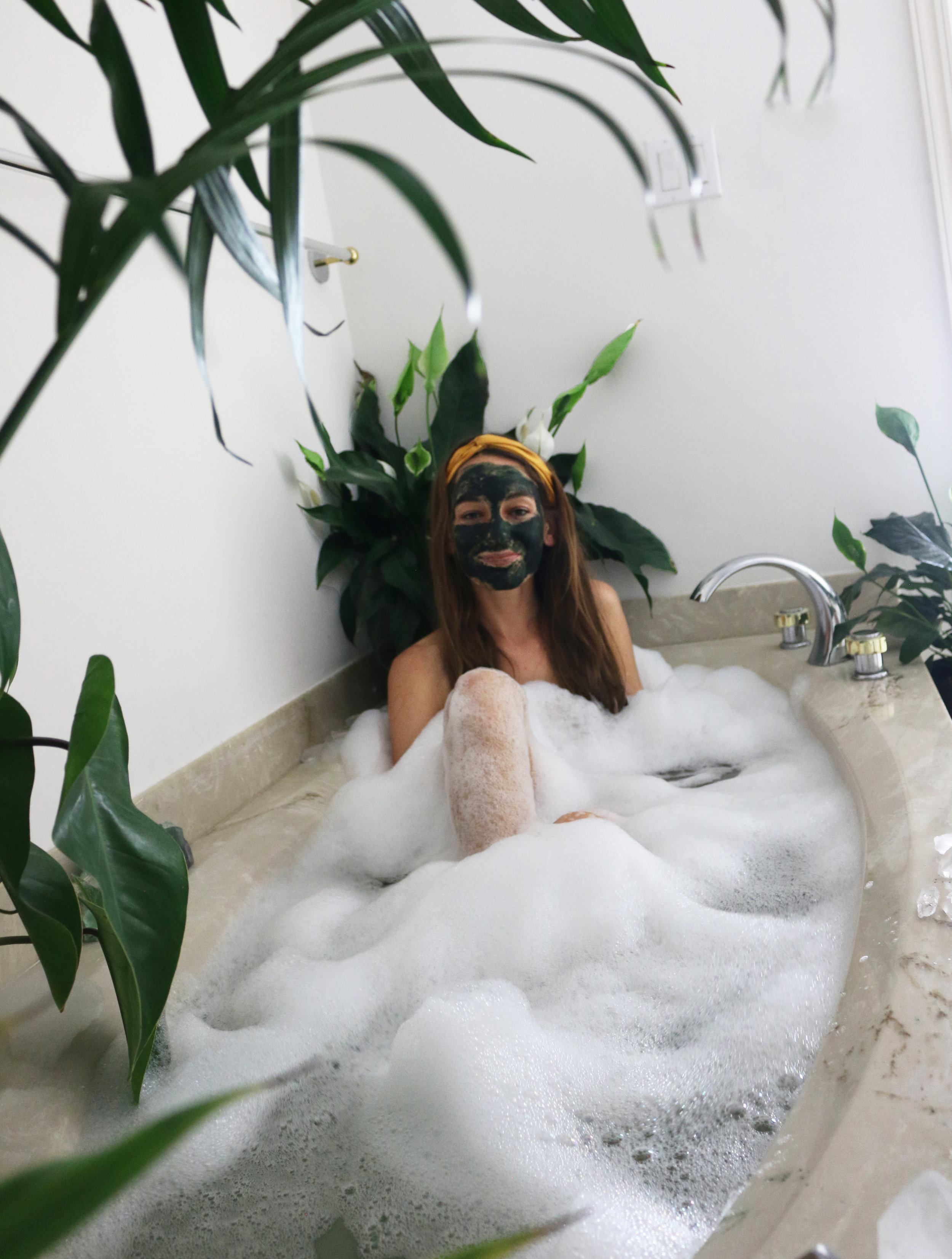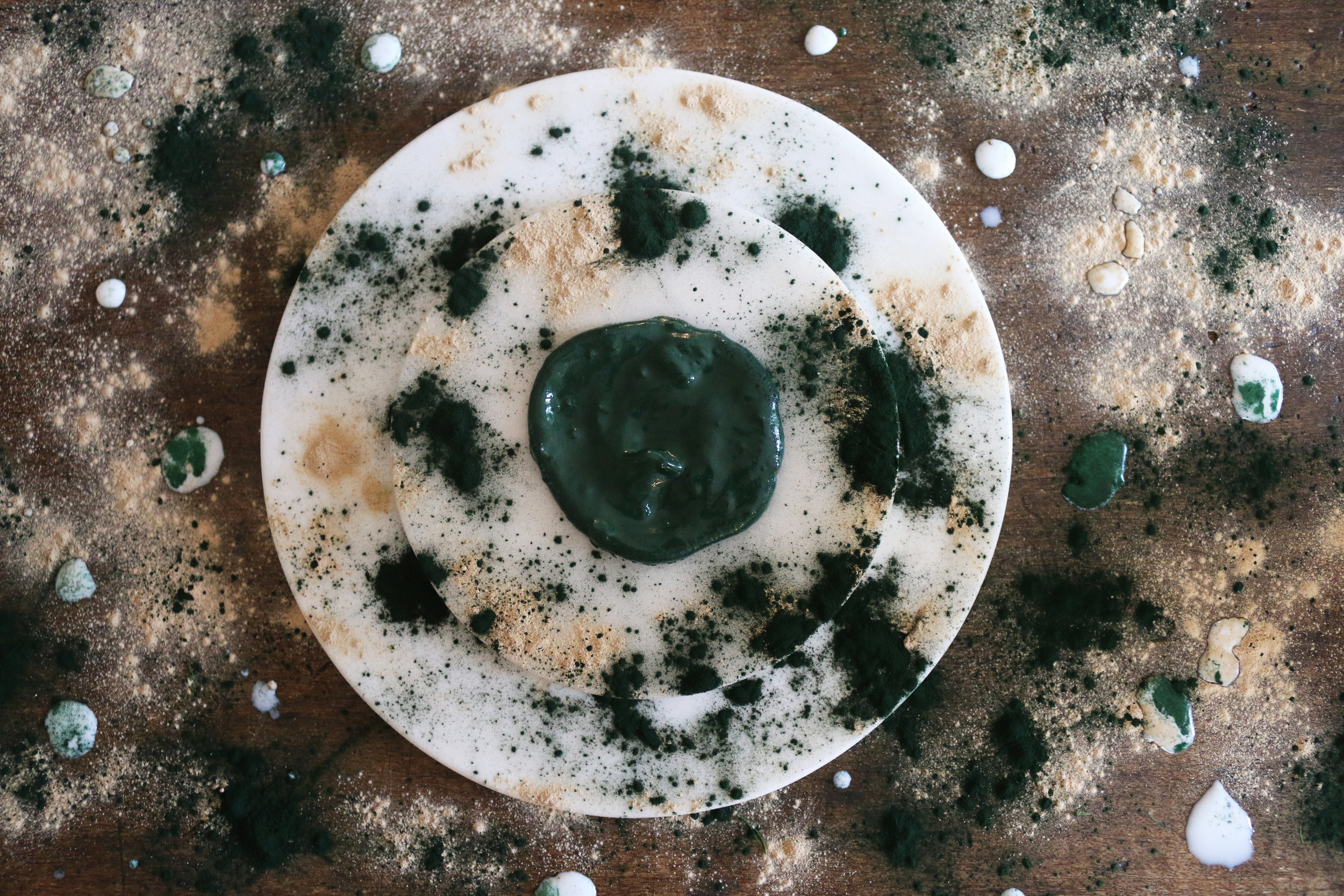Goat Milk Spirulina Mask
Processed and packaged foods (the kind with preservatives and fillers) are finally being recognized as a health disaster. But what about beauty products? Our skin absorbs what we put on it in seconds and many of the ingredients pass straight into our blood. So what goes on the outside ends up on the inside and highly processed cosmetics can pose even higher health risks than foods because regulations are much more lax. Why buy expensive masks and creams when you can make them yourself using natural ingredients that you control? Before I got into making my own beauty products, I was under the glamoured impression that because something came in a fancy tube with a high price tag, it must hold secret powers better than any singular pure ingredient. But the very opposite is true. I’ve been shocked (and thrilled!) to find that a two or three ingredient masks, scrubs and oils can leave my skin feeling better than any of the expensive store-bought products I’ve tried, and I have tried a lot… but once you understand the composition of natural ingredients, you start to realize they hold more healing power than any beauty product synthesized in a lab.
This face mask is made with three natural and edible ingredients that work in synergy to support skin health.
Spirulina
This blue/green algae is packed with skin-supporting antioxidants that help protect us from free radical damage (think sun and pollution, and yes, pollution wreaks havoc on skin and contributes to premature aging). Spirulina is also filled with both fatty and amino acids that nourish skin, decreases inflammation, evens skin tone and texture and encourages collagen reparation and cell turnover. This magical algae is also packed with vitamin K which helps to increase circulation and diminish the appearance of dark circles under the eyes and brighten complexion. (1) (2) (3) (4)
Goat Milk
It wasn’t for nothing that Cleopatra bathed in Camel’s milk, and goat milk offers the same benefits. Goat milk contains a particularly high amount of alpha-hydroxy acids such as lactic acid compared to other milks (these acids and other enzymes found in goat milk is also why it’s often easier to digest than cow’s milk for those with dairy sensitivities). Lactic acid helps remove dead skin cells and increase cell turnover. Goat Milk is also charged with vitamins and minerals, particularly vitamin A, which is essential to the reparation and production of collagen and damaged skin tissue. And it also offers a big punch of anti-inflammatory action. Acne is often a form of inflammation, which makes goat milk particularly effective for treating acne, including cystic acne. (5) (6) (7)
Amla (Indian Gooseberry) powder
This berry carries a large dose of vitamin C. Along with vitamin A, vitamin C is crucial in the synthesis and reparation of collagen, fibroblasts and other dermal cells. Vitamin C is also a powerful antioxidant and when applied to the skin, helps to protect from free radical damage (which leads to premature aging), and helps even skin-tone and remove sun spots and fine lines. (8) (9) (10)
Ingredients
For 2 face masks
1 teaspoon spirulina powder
1 teaspoon amla powder (no amla? you can also open up or crush vitamin C pills)
1 teaspoon goat milk (if using goat milk powder, add a few drops of water to the mask)
Recipe
Mix the ingredients together into a paste and apply a layer to your face, neck and chest while in the bath or shower. When the mask dries, add a little water and exfoliate your face, rubbing your skin with your fingers in small circular motions moving upwards and then rinse.
Store the leftover mask in the refrigerator (in a small glass jar if possible!) for up to a week.



